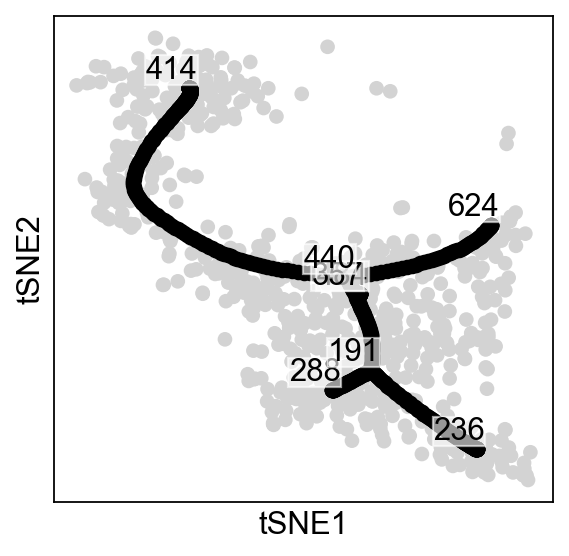Exploring Sigma¶
[1]:
import scFates as scf
import scanpy as sc
sc.set_figure_params()
import warnings
We are loading a dataset containing a simple bifurcation, already procesed with PCA, UMAP and diffusion maps
[2]:
adata=scf.datasets.test_adata()
Example of a bad sigma¶
Here we use an overly high sigma parameter to demonstrate its danger:
[3]:
scf.tl.tree(adata,
Nodes=50,
use_rep="X_pca",
method="ppt",
ppt_nsteps=50,
ppt_sigma=100,
ppt_lambda=1,
seed=42,plot=True)
inferring a principal tree --> parameters used
50 principal points, sigma = 100, lambda = 1, metric = euclidean
fitting: 4%|▍ | 2/50 [00:01<00:37, 1.27it/s]
converged
finished (0:00:01)
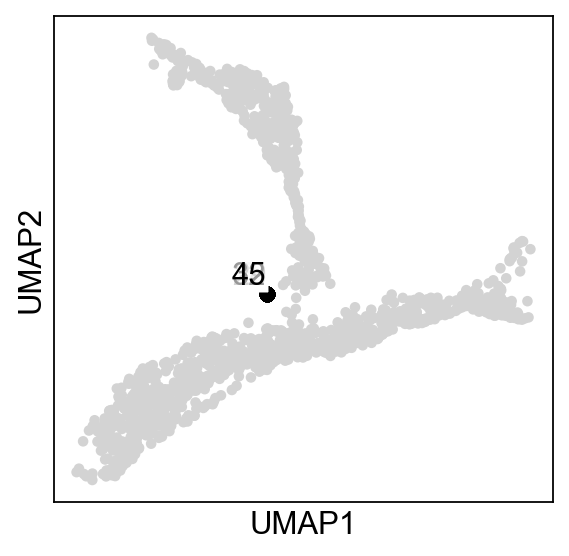
--> added
.uns['ppt'], dictionnary containing inferred tree.
.obsm['X_R'] soft assignment of cells to principal points.
.uns['graph']['B'] adjacency matrix of the principal points.
.uns['graph']['F'] coordinates of principal points in representation space.
As you can see, all the nodes collapsed in the middle of the data, this is due to the fact that each node is assigned to all cells, which is not what we want. Instead, we are aiming for locallity, were each node is assigned to a subset of cells close to it:
[4]:
adata.obs["R"]=adata.obsm["X_R"][:,0]
sc.pl.umap(adata,color="R",colorbar_loc=None)
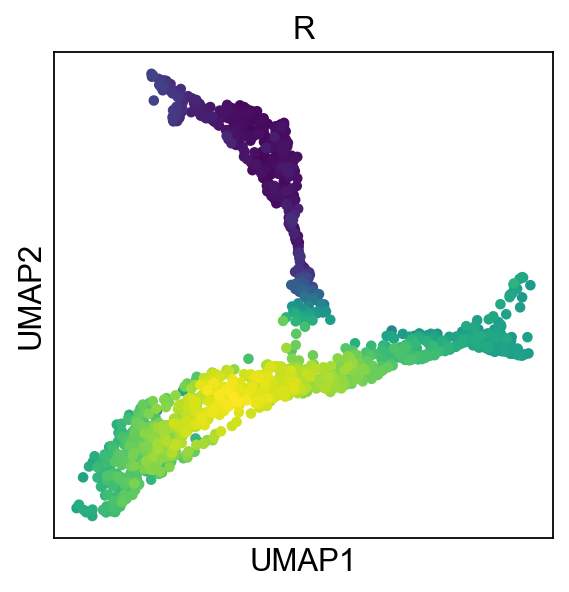
Exploring sigma in PC space¶
[5]:
sig=scf.tl.explore_sigma(adata,
Nodes=50,
use_rep="X_pca",
sigmas=[1000,100,10,1,0.1,0.01],
seed=42,plot=True)
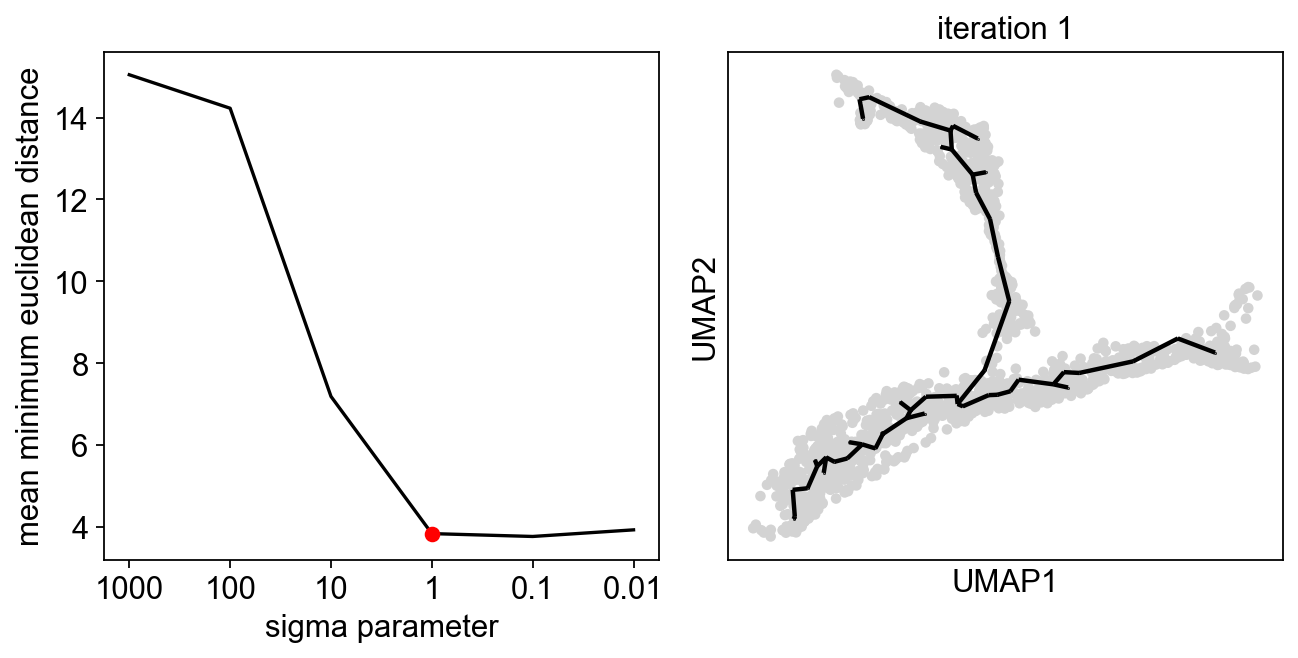
In PC space, a sigma of 1 is suggested, if we look at assigned we obtain a much better locality:
[6]:
adata.obs["R"]=adata.obsm["X_R"][:,0]
sc.pl.umap(adata,color="R",colorbar_loc=None)
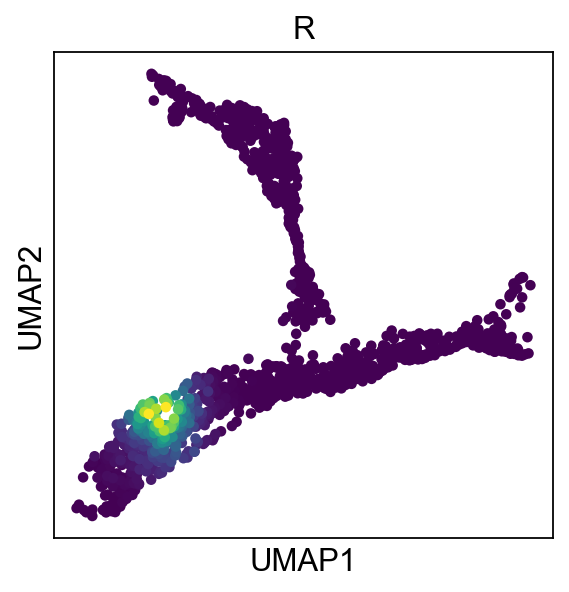
[7]:
scf.tl.tree(adata,
Nodes=50,
use_rep="X_pca",
method="ppt",
ppt_nsteps=50,
ppt_sigma=sig,
ppt_lambda=100,
seed=42,plot=True)
inferring a principal tree --> parameters used
50 principal points, sigma = 1, lambda = 100, metric = euclidean
fitting: 50%|█████ | 25/50 [00:01<00:01, 16.18it/s]
converged
finished (0:00:01)
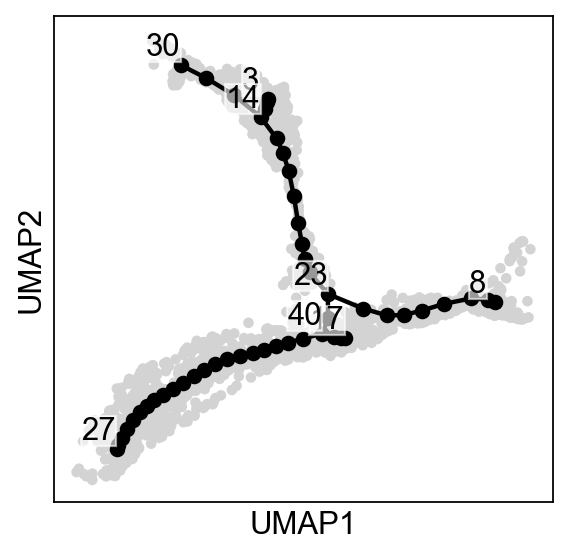
--> added
.uns['ppt'], dictionnary containing inferred tree.
.obsm['X_R'] soft assignment of cells to principal points.
.uns['graph']['B'] adjacency matrix of the principal points.
.uns['graph']['F'] coordinates of principal points in representation space.
Exploring sigma in UMAP space¶
[8]:
sig=scf.tl.explore_sigma(adata,Nodes=50,use_rep="X_umap",seed=42,plot=True)
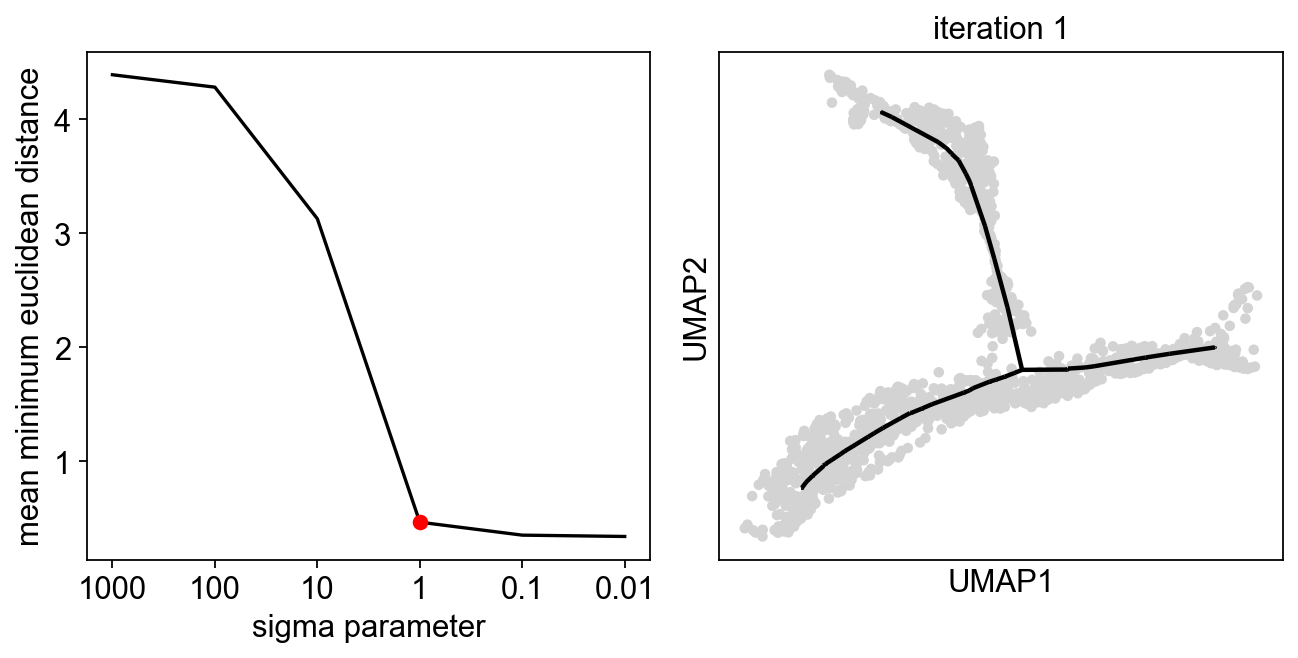
[9]:
scf.tl.tree(adata,
Nodes=50,
use_rep="X_umap",
method="ppt",
ppt_nsteps=50,
ppt_sigma=sig,
ppt_lambda=100,
seed=42,plot=True)
inferring a principal tree --> parameters used
50 principal points, sigma = 1, lambda = 100, metric = euclidean
fitting: 38%|███▊ | 19/50 [00:00<00:00, 73.28it/s]
converged
finished (0:00:00)
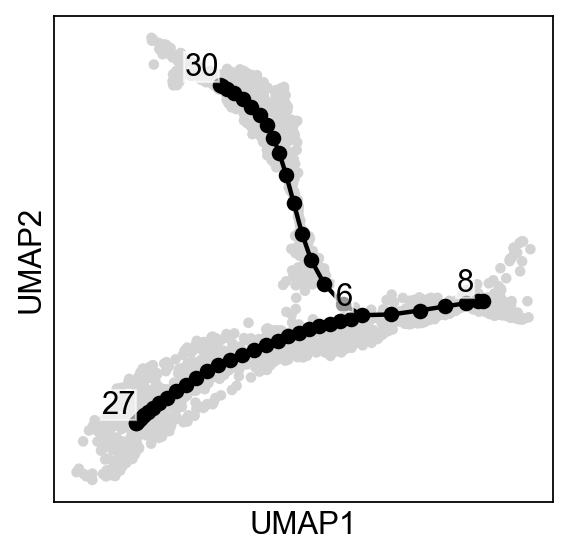
--> added
.uns['ppt'], dictionnary containing inferred tree.
.obsm['X_R'] soft assignment of cells to principal points.
.uns['graph']['B'] adjacency matrix of the principal points.
.uns['graph']['F'] coordinates of principal points in representation space.
Exploring sigma in diffusion space¶
[10]:
sig=scf.tl.explore_sigma(adata,50,"X_diffusion",seed=42,plot=True)
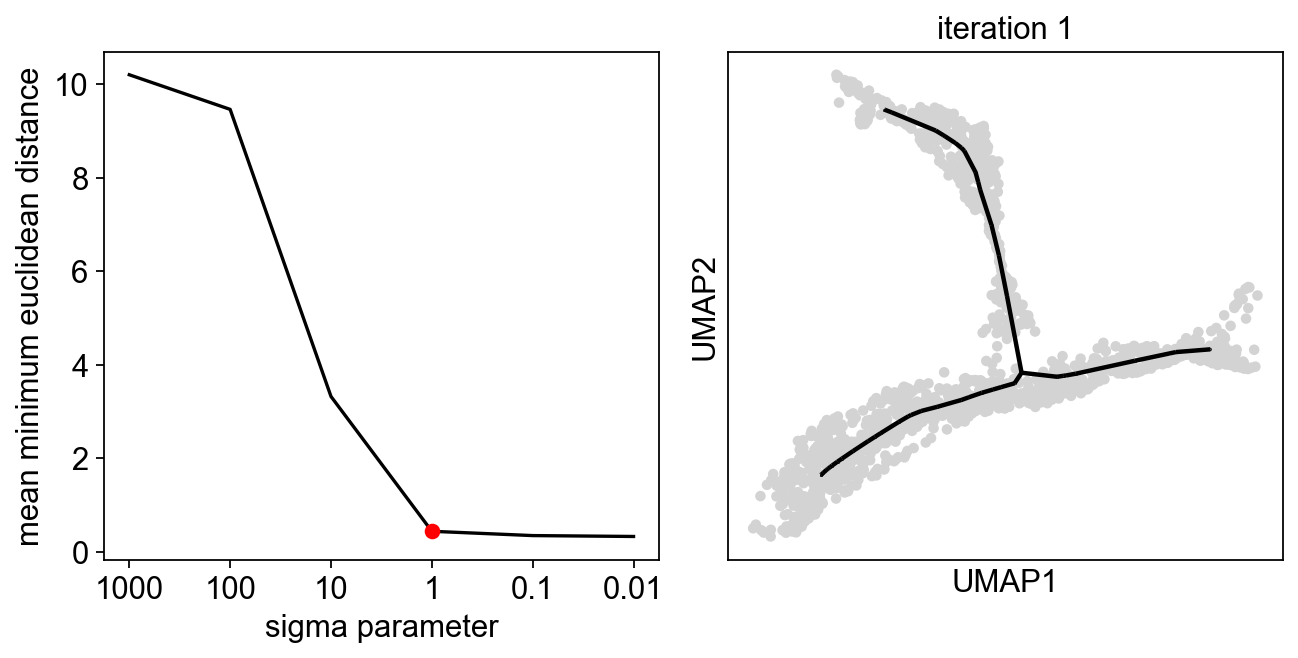
[11]:
scf.tl.tree(adata,
Nodes=50,
use_rep="X_diffusion",
method="ppt",
ppt_nsteps=50,
ppt_sigma=sig,
ppt_lambda=100,
plot=True,
seed=42)
inferring a principal tree --> parameters used
50 principal points, sigma = 1, lambda = 100, metric = euclidean
fitting: 54%|█████▍ | 27/50 [00:00<00:00, 80.19it/s]
converged
finished (0:00:00)
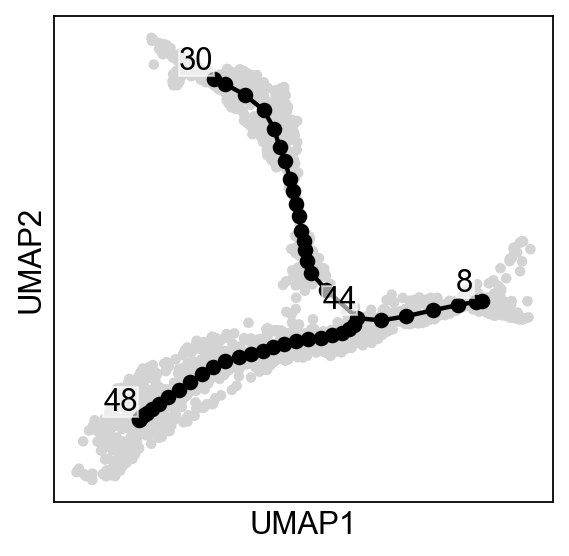
--> added
.uns['ppt'], dictionnary containing inferred tree.
.obsm['X_R'] soft assignment of cells to principal points.
.uns['graph']['B'] adjacency matrix of the principal points.
.uns['graph']['F'] coordinates of principal points in representation space.
Neural crest dataset¶
Let’s reproduce the results from Soldatov et al. (2019)
[12]:
import scanpy as sc
adata=scf.datasets.neucrest19()
We can perform two rounds of exploration, to get a finer selection of the sigma value:
[13]:
sig=scf.tl.explore_sigma(adata,690,use_rep="X",weight_rep="weights",nsteps=1,metric="cosine",seed=42,plot=True,
second_round=True)
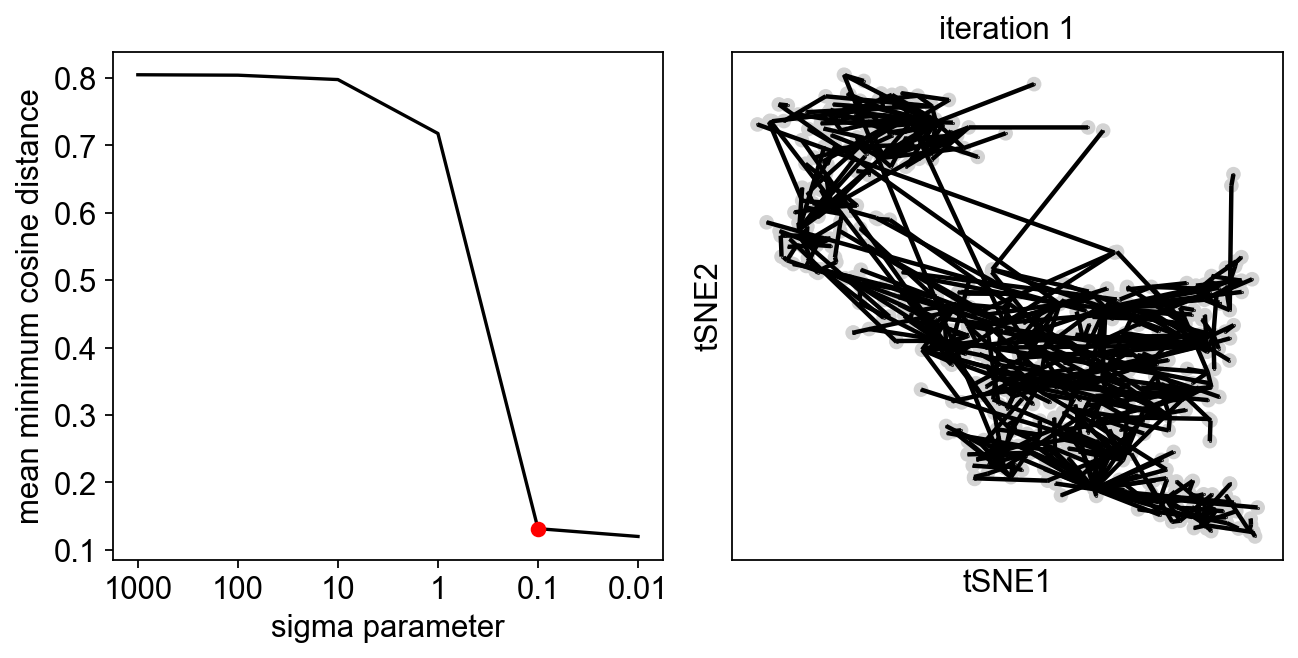
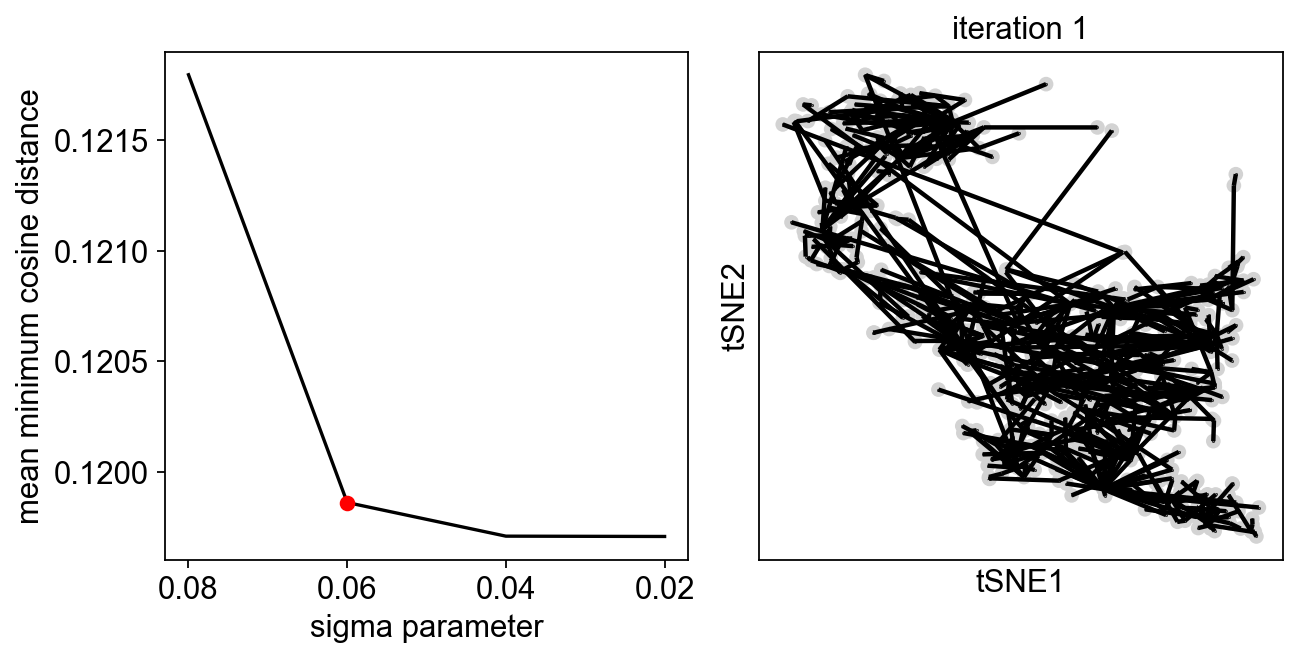
Since we are doing only one iteration, the resulting graph can look messy, but our aim is to avoid the collapse of the principal points!
[14]:
scf.tl.tree(adata,Nodes=adata.shape[0],use_rep="X",weight_rep="weights",
ppt_metric="cosine",method="ppt",device="gpu",
ppt_sigma=sig,ppt_lambda=600,seed=42)
inferring a principal tree --> parameters used
690 principal points, sigma = 0.06, lambda = 600, metric = cosine
fitting: 100%|██████████| 50/50 [00:12<00:00, 4.01it/s]
inference not converged (error: 0.00861262787058733)
finished (0:00:16) --> added
.uns['ppt'], dictionnary containing inferred tree.
.obsm['X_R'] soft assignment of cells to principal points.
.uns['graph']['B'] adjacency matrix of the principal points.
.uns['graph']['F'] coordinates of principal points in representation space.
[15]:
scf.pl.graph(adata)
